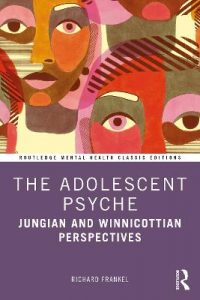In the classic edition of this outstanding book, originally published in 1998, Richard Frankel explores adolescence as a crucial, unique, and turbulent period of human development. He provides guidance for clinicians working with young people as they undergo significant transformations in the way they think, act, feel and perceive the world.
The book addresses how the disruptions manifest in adolescent behaviour is upsetting and often incomprehensible to the adults surrounding them. It seeks to revision the traumas, extreme fantasies, testing of limits, etc. so endemic to this period of life through the lens of the urge toward self-realization. This allows for new and creative ways of working with the intensely confusing, and often extreme, countertransference feelings that arise in our encounter with adolescents. It offers ways of reflecting upon the vicissitudes of our own experience of being an adolescent that help to unlock the typical impasses that occur in the stand-off between adult and adolescent ways of seeing the world. Through engagement with the work of Jung, Hillman, and Winnicott, Frankel offers a critique of the traditional psychoanalytic understanding of adolescence as a recapitulation of childhood, thus making a claim for adolescence as a discrete developmental period with its own orginary dynamics. In this light, he explores such topics as individuation, persona, shadow, bodily, idealistic and ideational awakenings, as well the effects of culture on development. This classic edition also includes also includes a new foreword from Mary Watkins, as well as an extended introduction by the author that examines what effects the digital revolution is having on the contemporary experience of being an adolescent. Looking back on this work nearly twenty-five years since its publication, Frankel contends that the core themes of adolescence addressed in this book offer a compelling framework for comprehending both the positive and negative impacts of the digital on adolescent life.
Featuring numerous clinical case studies and clear theoretical formulations, this classic edition is important reading for psychotherapists, analysts, parents, educators and anyone working with adolescents.

